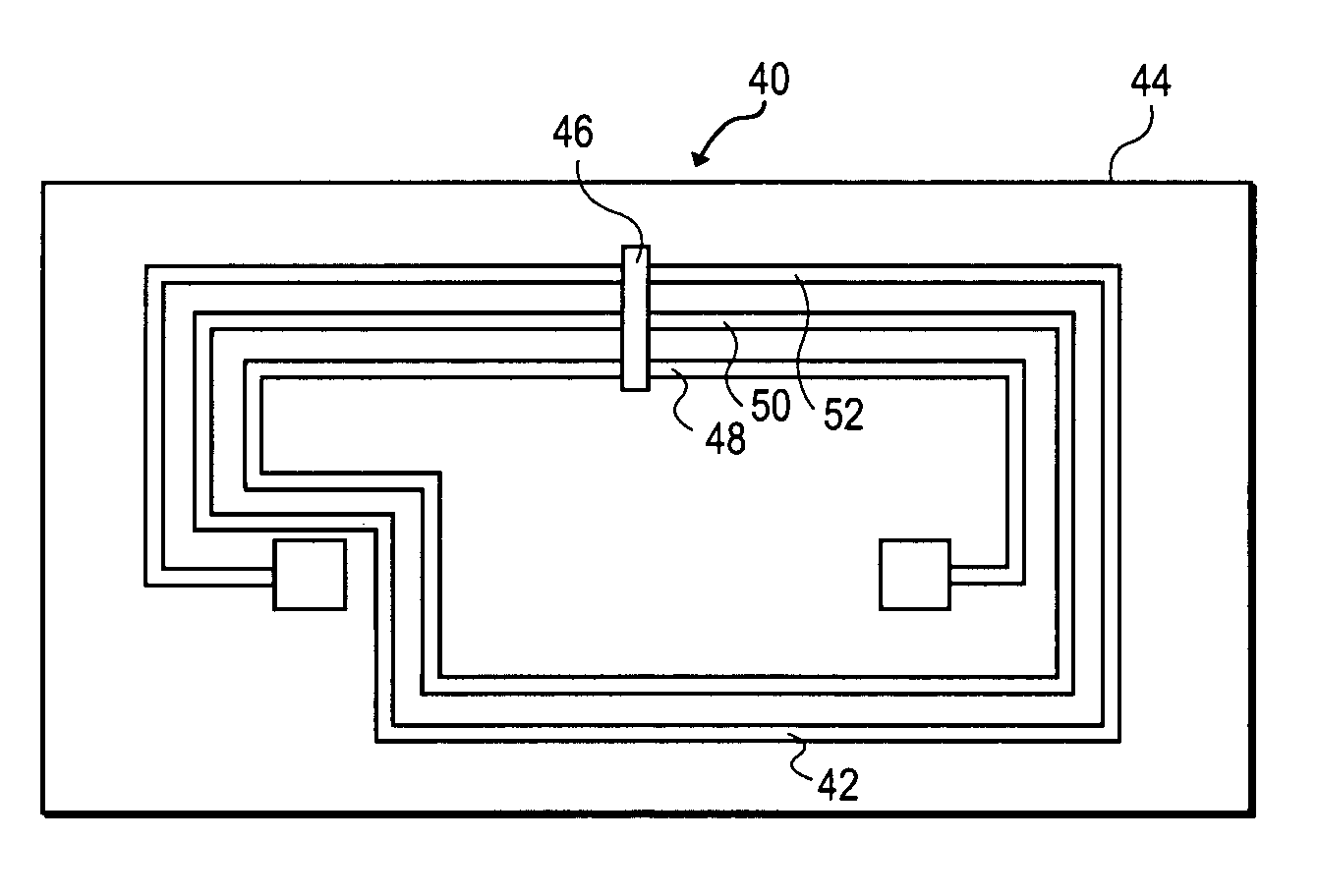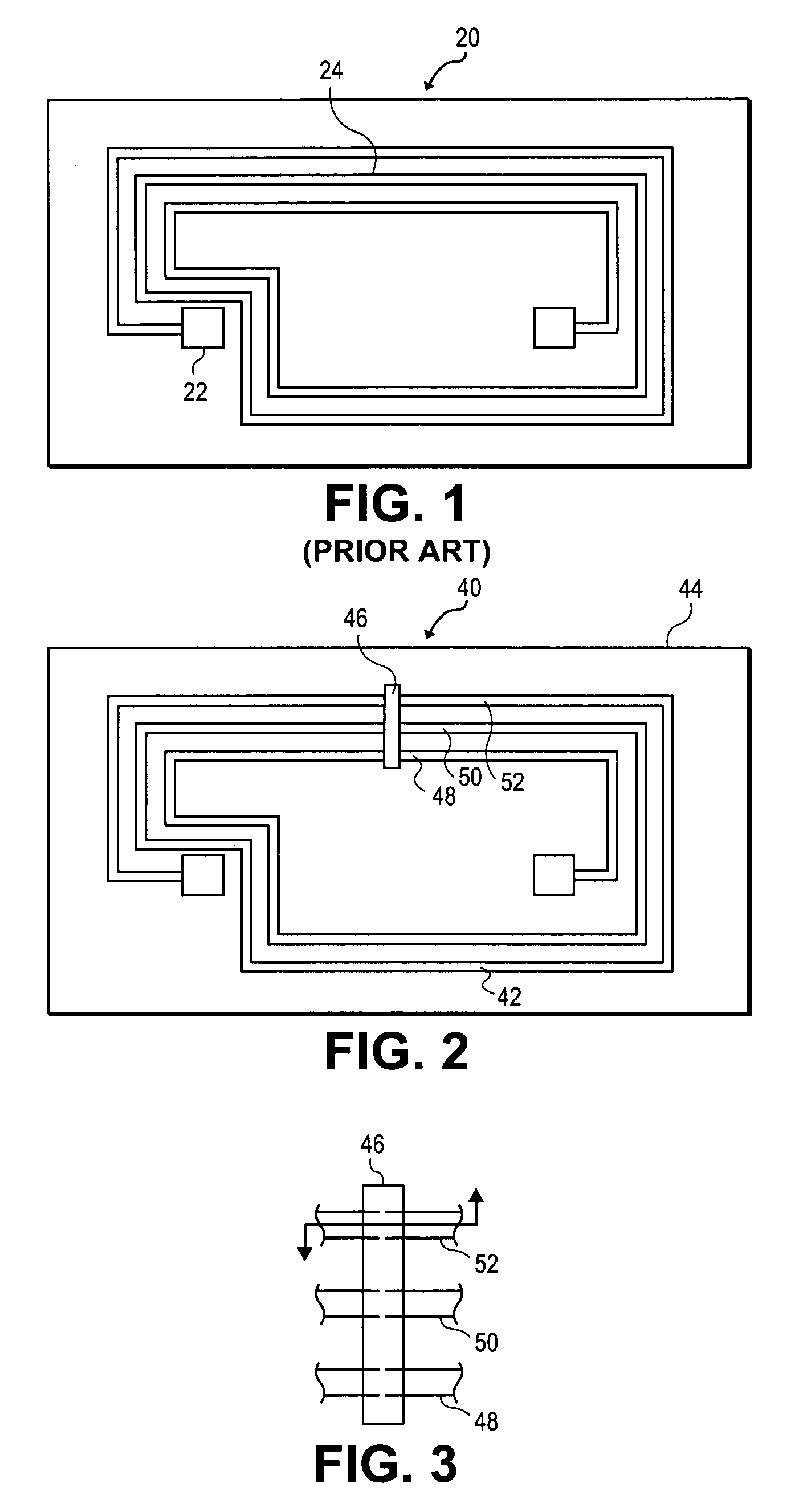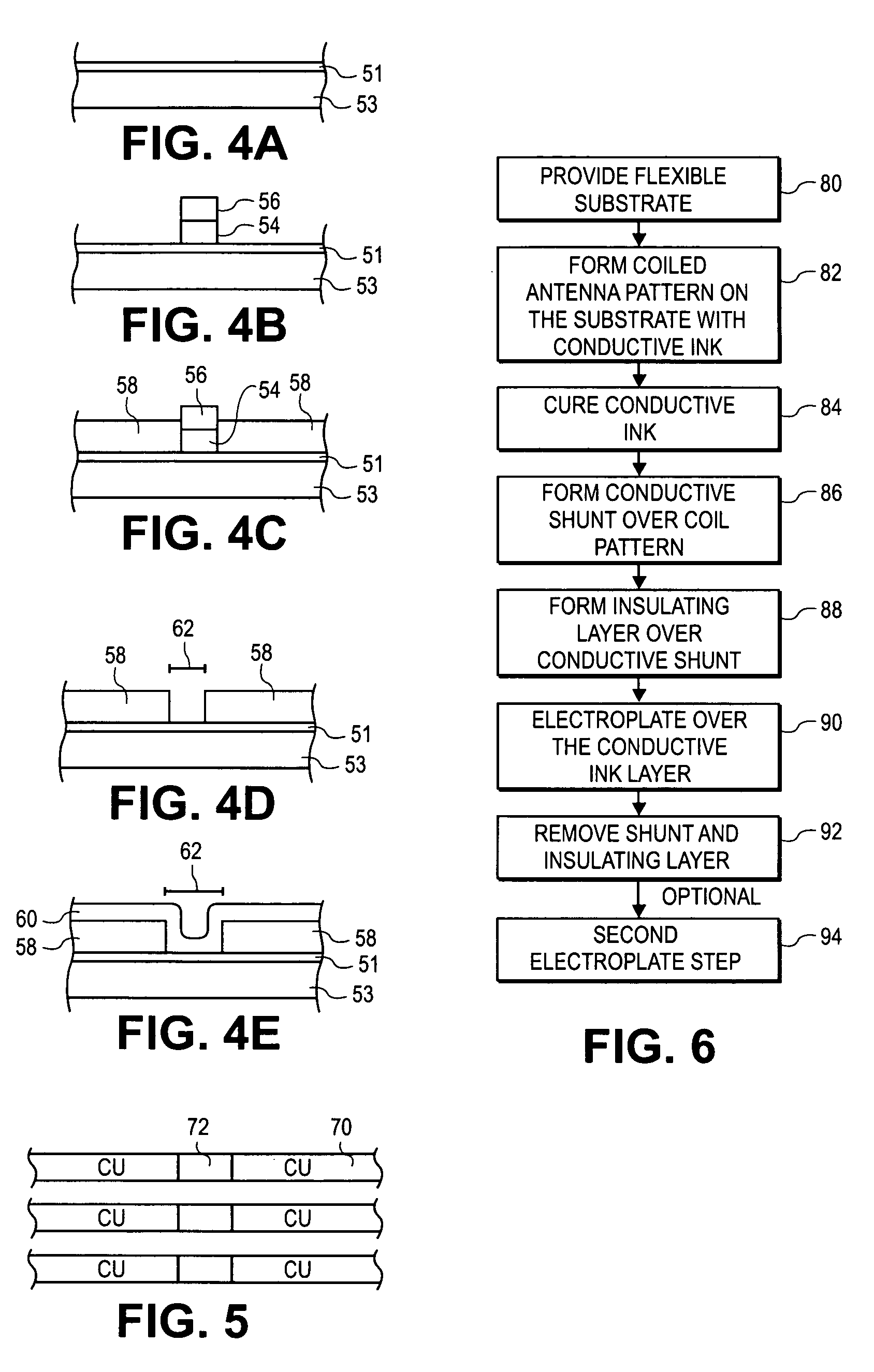Method for forming radio frequency antenna
a radio frequency antenna and antenna technology, applied in the field of radio frequency antennas, can solve the problems of unreliability and prone to failure, and achieve the effects of reducing the resistance between the electrode and the other locations on the conductive ink layer, and reducing the risk of failur
- Summary
- Abstract
- Description
- Claims
- Application Information
AI Technical Summary
Benefits of technology
Problems solved by technology
Method used
Image
Examples
Embodiment Construction
[0024]FIG. 2 is a top view of a radio frequency antenna 40 being constructed by the method of one embodiment of the present invention. The radio frequency antenna 40 includes a conductive ink pattern 42 formed in a coil on the substrate 44. An electrical-short layer 46 is formed over top of the conductive ink coil pattern, and preferably a nonconductive plating resist is formed over the short. The electrical-short layer 46 ensures that points 48, 50 and 52 on the conductive ink pattern 42 will have relatively similar voltages during the electroplating process. This means all locations on the conductive ink pattern 42 will be electroplated evenly. Thus the apparatus of the present invention allows for a conductive electroplate layer of sufficient thickness on all points of the radio frequency antenna.
[0025]The use of the electrical-short layer 46 allows for the use of a thinner and / or narrower conductive ink layer 42. The resistance of the conductive ink layer during the electroplate...
PUM
| Property | Measurement | Unit |
|---|---|---|
| conductive | aaaaa | aaaaa |
| non-conductive | aaaaa | aaaaa |
| electrical- | aaaaa | aaaaa |
Abstract
Description
Claims
Application Information
 Login to View More
Login to View More - R&D
- Intellectual Property
- Life Sciences
- Materials
- Tech Scout
- Unparalleled Data Quality
- Higher Quality Content
- 60% Fewer Hallucinations
Browse by: Latest US Patents, China's latest patents, Technical Efficacy Thesaurus, Application Domain, Technology Topic, Popular Technical Reports.
© 2025 PatSnap. All rights reserved.Legal|Privacy policy|Modern Slavery Act Transparency Statement|Sitemap|About US| Contact US: help@patsnap.com



